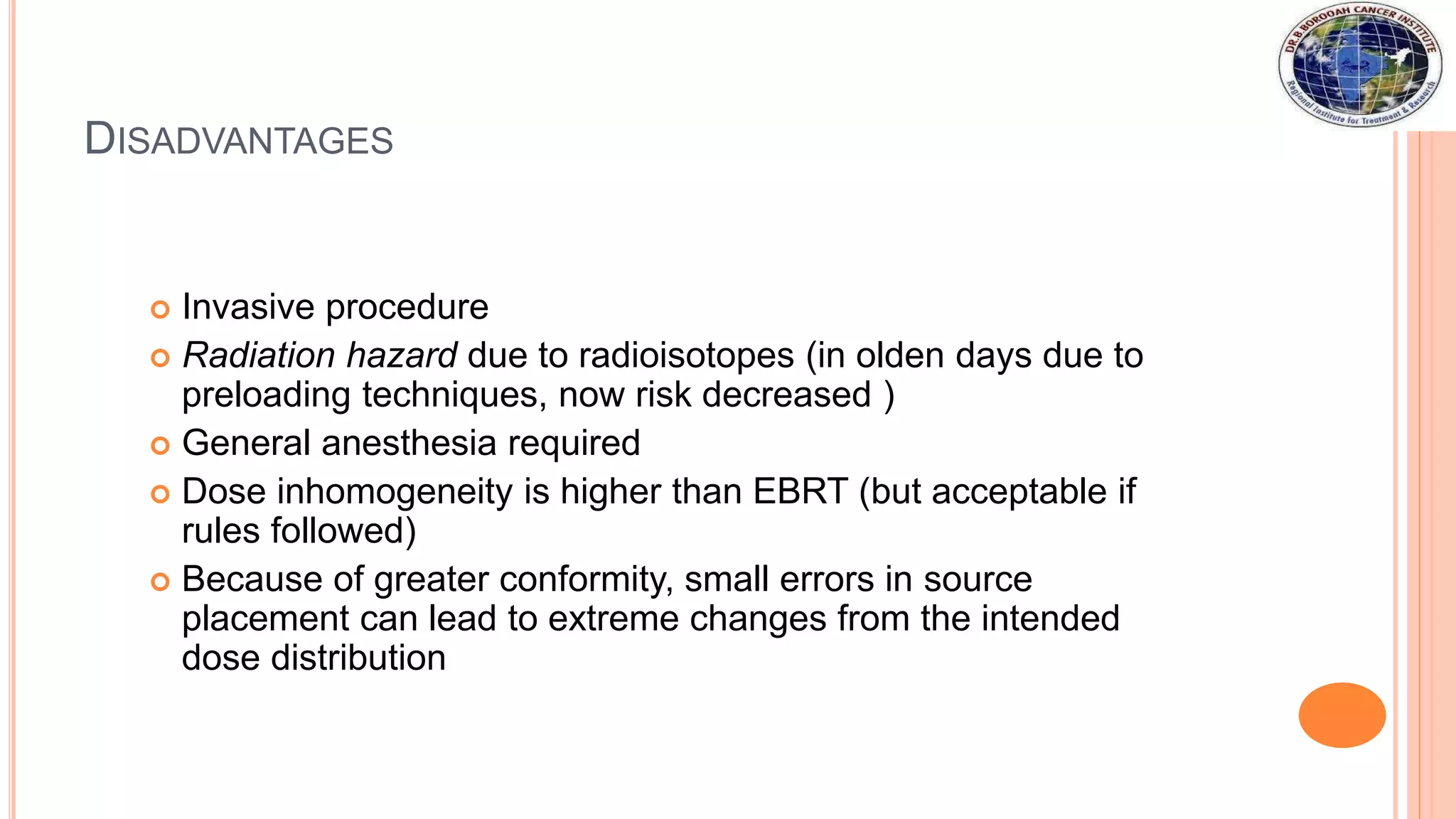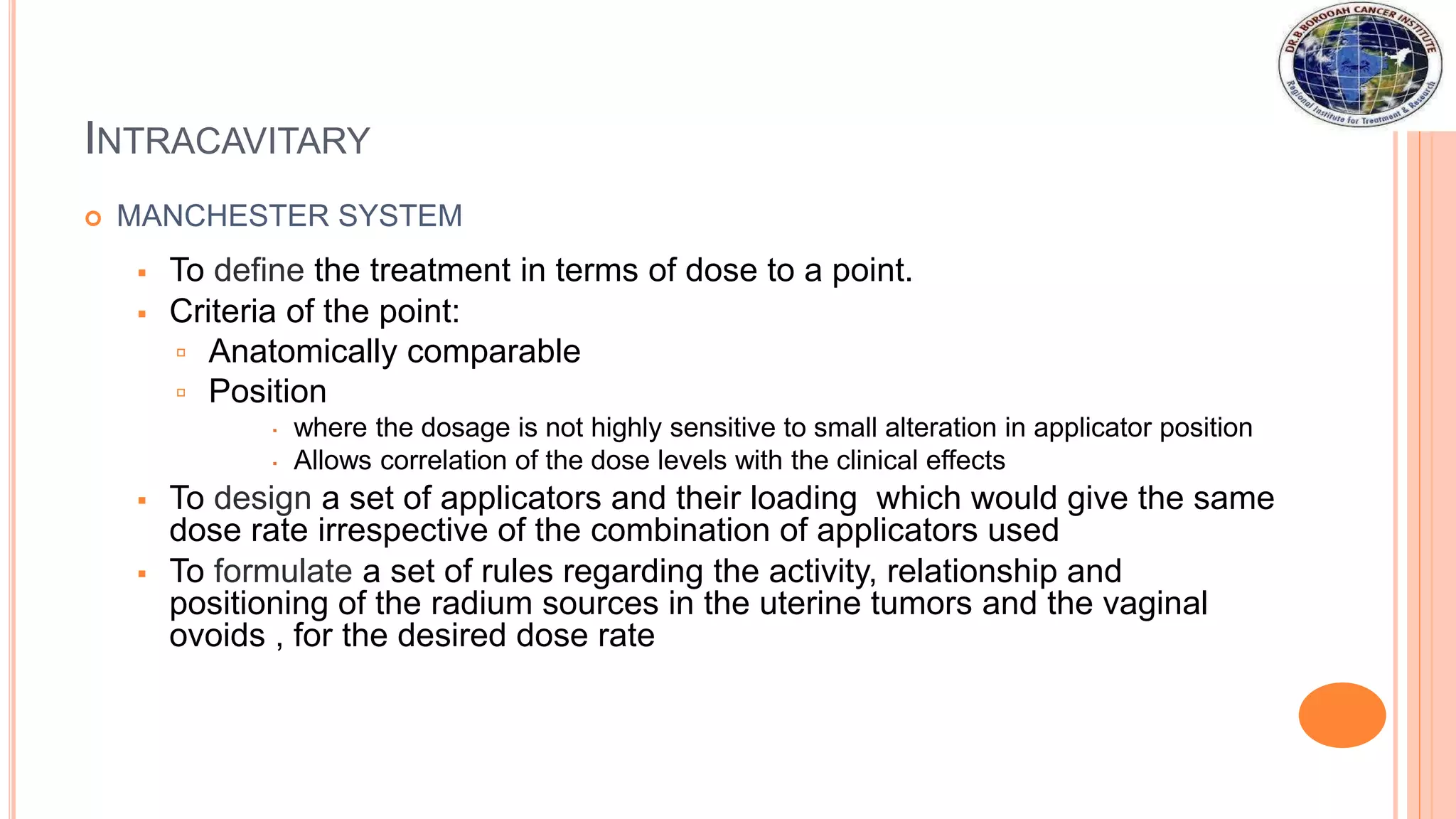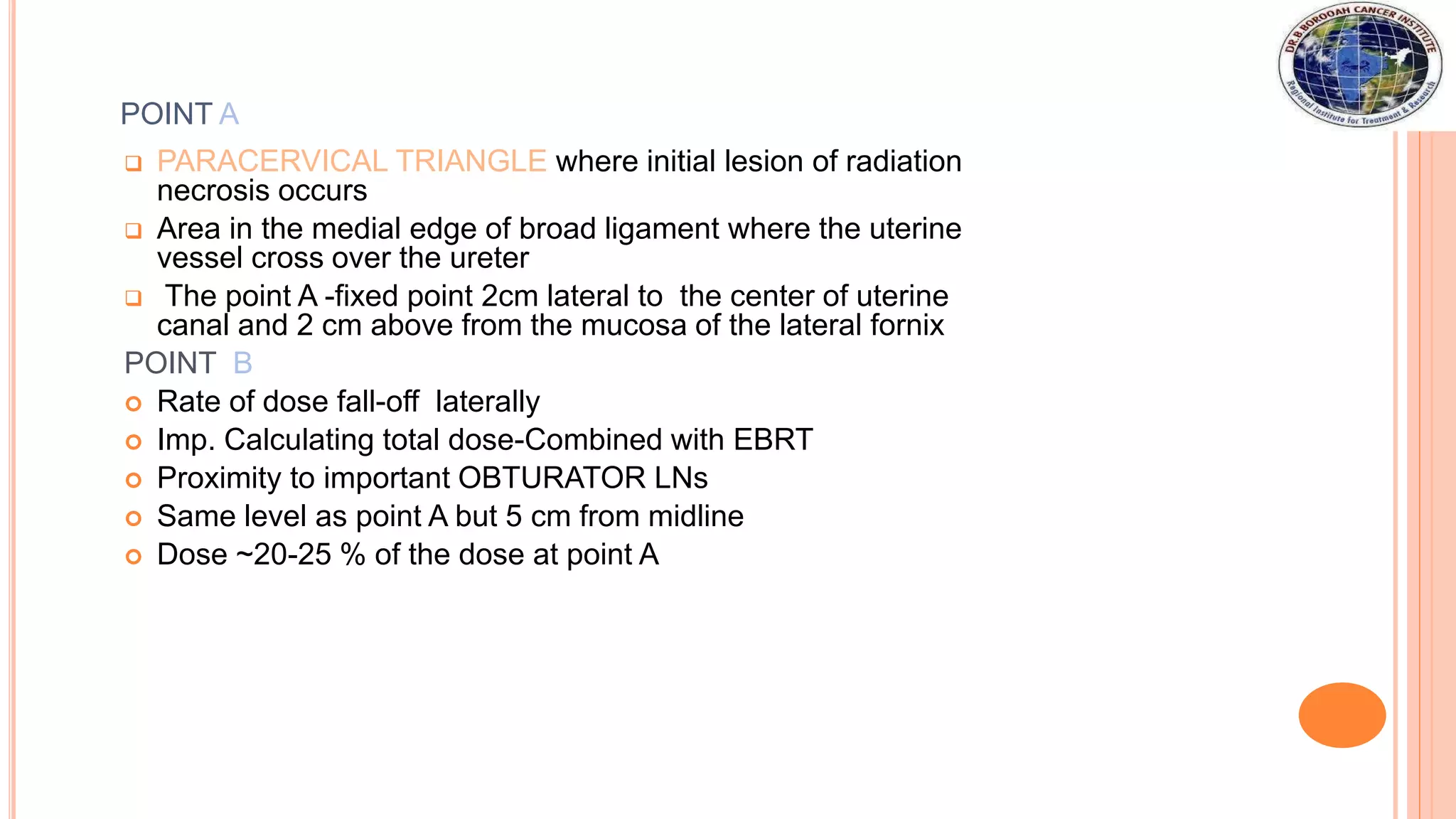The document provides information on the principles of brachytherapy including its definition, history, advantages, disadvantages, and types. It discusses the different classifications of brachytherapy based on duration of implant, source placement, source loading pattern, and dose rate. Key details about low-dose rate, high-dose rate, and pulsed-dose rate brachytherapy are provided. Common brachytherapy sources and applicators are also described.



























































